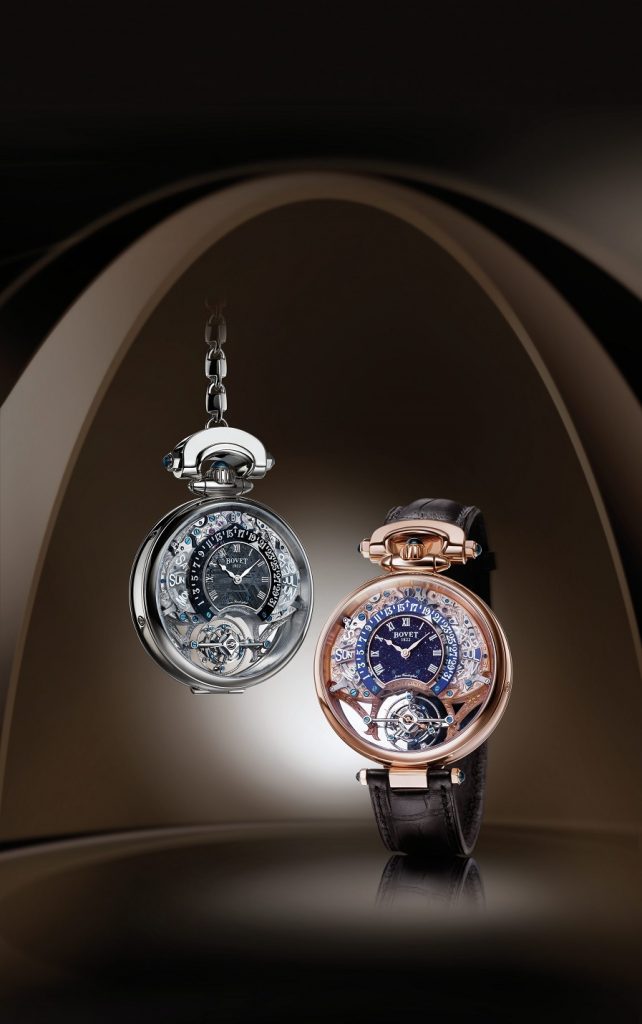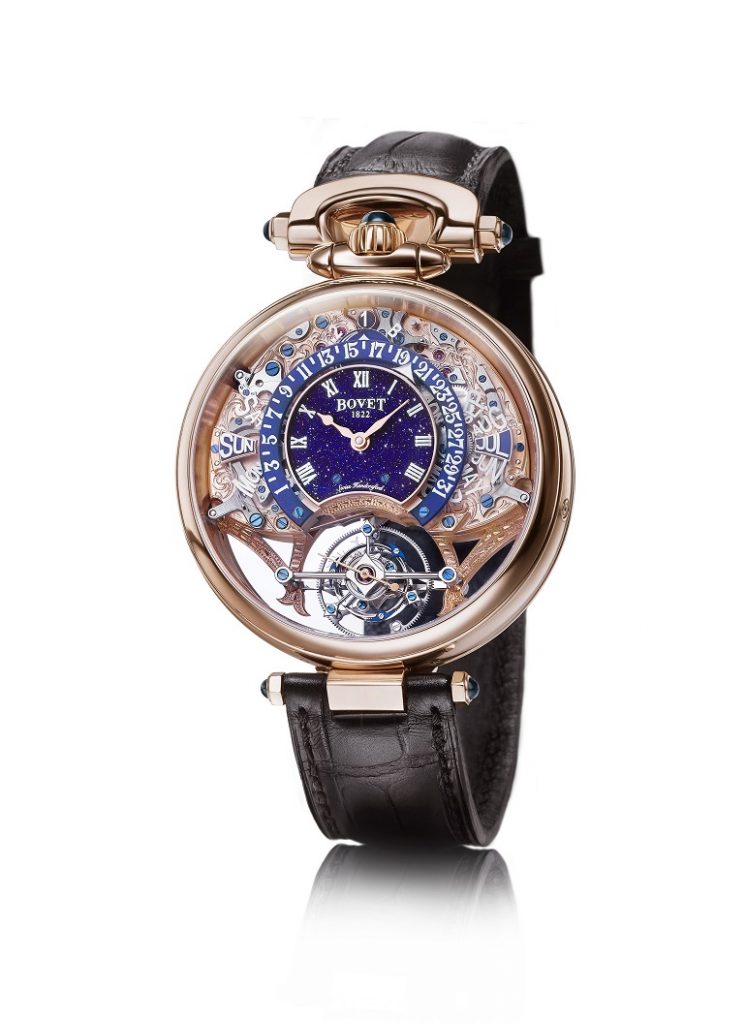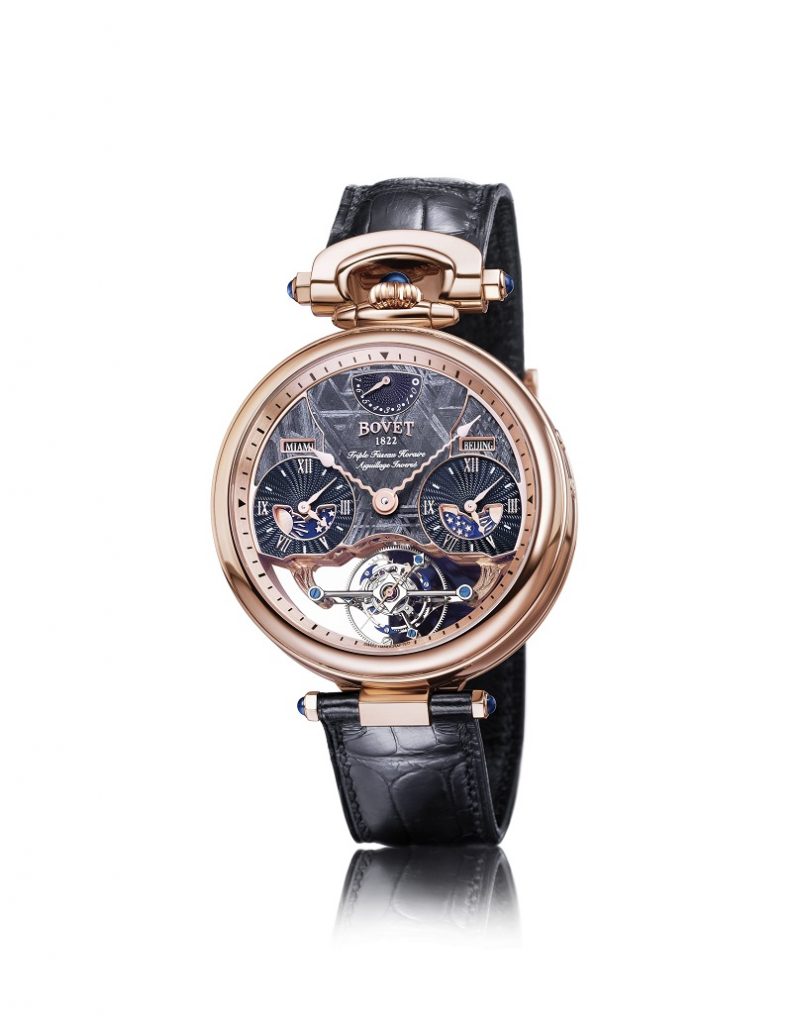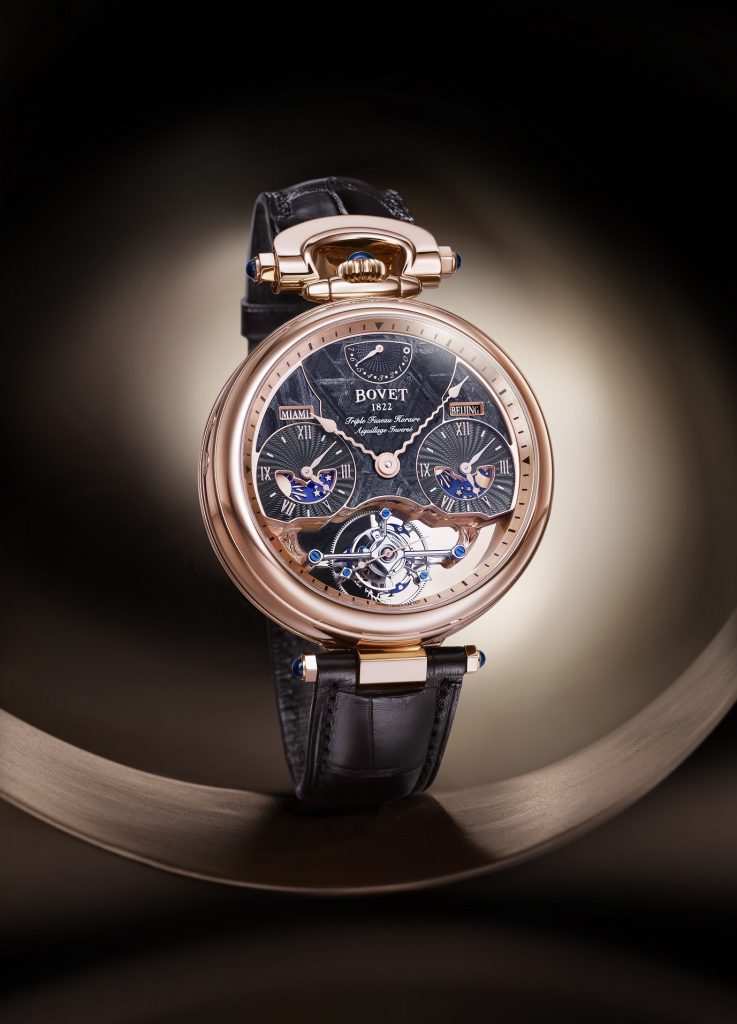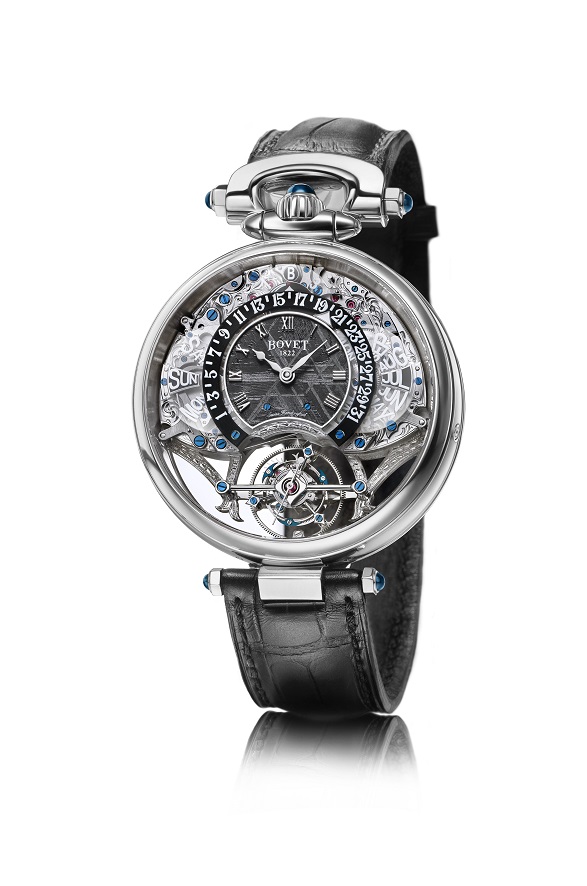Two centuries of excellence
When the Bovet brothers founded the Maison in 1822, the timepieces they manufactured instantly became undisputed references in the watchmaking decorative arts. The presence of BOVET watches in specialist watchmaking and art museums attests to the enduring longevity of this supremacy.
Today, the BOVET craftsmen strive to honor this heritage by perpetuating their expertise and constantly pushing back the boundaries of excellence. The same unstinting quest for perfection also inspired Pascal Raffy to equip in 2006 BOVET 1822 with its own manufactures: BOVET 1822 Manufacture de Cadrans and DIMIER 1738 Manufacture de Haute Horlogerie Artisanale, where every technique is deployed with unrivalled mastery and the choice of noble materials continues to expand.
This year, the BOVET collections feature two materials which the artisans of the House have been mastering and proposing since 2008. Their captivating appearance and richly symbolic origins are guaranteed to fascinate.
A stellar appearance
The origins of aventurine are as terrestrial as they come: it is a transformation of the silica contained in sand and most minerals used to make the glass that serves as a basis for the delicate fabrication of aventurine itself.
To explore the origins of this artisanal composition, we need to travel back to the 17th century. It was in Murano, the capital of artistic glassware, that the first “recipes” emerged, which have been secretly preserved for yearsby the Miotti family, who are credited with its invention. To create aventurine, tinted glass is combined with copper and protoxide of copper inclusions, whose triangular and hexagonal crystals blaze with a thousand sparkles. The composition and manufacture of aventurine are empirical processes, and only an experienced, expert artisan can obtain a homogenous result. This is why aventurine remains a rare material that cannot be produced in large quantities. Aventurine features the translucence of glass, studded with tiny copper highlights that seem to float freely within it. Although it is a processed material, the aesthetic qualities of aventurine have helped it find favor with jewelers and even gemologists, who have labeled it “goldstone” in English and “rivière d’or” (“river of gold”) in French. The name aventurine itself is attributed to its discovery following a chance incident one day during which copper filings fell accidentally (all’avventura) into a crucible of molten glass. These days, the material is also often referred to as “stellaria” because of its obvious resemblance to a starry sky.
A philosophical dimension of time and space from the outer reaches of the universe
This same starry sky is the origin of the second material highlighted this year by BOVET 1822’s dial-makers, who showcase meteorite in several of the models in the 2017 collection. While a considerable number of meteorites fall to Earth each year, less than 2% of them belong to the “irons” category that can be used in watchmaking.
And unfortunately, very few of them are large enough to provide enough material for a dial. The total eight
of meteorites found on Earth that can be used for watchmaking is estimated at just a few dozen kilograms.
This kind of meteorite comes from the nuclei of large celestial bodies (of at least several hundred kilometers in diameter). The variety from which BOVET dials are made comes from Namibia and is known as Gibeon meteorite (after the town nearest the discovery site). Its weight before crashing to Earth is estimated at 26 tons.
Many hundreds of kilograms have been found scattered in various fragments since its discovery in 1838, but
very few of these can be exploited for watchmaking purposes.
Ferrous meteorites consist of iron and nickel, while Gibeon also contains cobalt and phosphorus in minute quantities. The temperatures experienced by a ferrous meteorite when it enters the Earth’s atmosphere coupled with the speed at which it cools produce unique geometric crystalline structures. These structures, referred to as Widmanstätten patterns, give each meteorite its unique appearance and identity. Once meteorite has been machined, it is polished then plunged into an acid bath to reveal these characteristic patterns.
Beyond its rarity and unparalleled appearance, meteorite has strong symbolic connotations and evokes the origins of the universe. Every civilization in history has been fascinated by this extraterrestrial metal. The earliest known reference describes a fallen meteorite on the island of Crete in 1478 BC. The Greeks used the metal from meteorites to create a host of sacred objects, while in Egypt, a meteoric iron dagger was found in the tomb of Tutankhamen. The Black Stone at the Kaaba in Mecca is also reputed to be a ferrous meteorite, and the Inuit attribute their own discovery of iron to fallen meteorites.
As for the Gibeon meteorite, we know that it crashed to Earth in prehistoric times. While specialists are unable to pinpoint its arrival with any precision, we do know that it is 4 billion years old – just like our very own solar system.
In the 20th century, physicists addressed the notion of space-time and explored the inextricable links between the fourth dimension (time) and the three that govern space. Throughout the centuries, the origins of meteorites have fascinated scientists, philosophers, entire cultures, religious scholars and physicists alike, and have revealed to us the infinite nature of time and space. Many believe that this material is nothing less than proof of eternity.
So what more symbolic material could possibly be chosen to manufacture dials, the very surfaces from which
we read off time?
Virtuoso artisans
Unfortunately, merely procuring these materials does not equate with creating dials. Given the extreme rarity and recent appearance of aventurine and meteorite in the watchmaking industry, artisans cannot rely on the experience of their predecessors. And so they have used their own expertise to develop the techniques required to exploit these two materials with their unique characteristics.
In theory, meteorite, which is 92% iron, should be easy enough to work. However, its unique crystalline structure and the various pressures and temperature variations to which it has been subjected during its long existence and journey through space make it an inhomogeneous metal studded with inclusions. Machining meteorite is therefore a particularly delicate process that requires constant attention. The next stage is to plunge the dial into an acid bath, whose duration defines the contrasts that will subsequently appear in the Widmanstätten patterns. Here too, particular attention is required, as the exposure period demands close observation and the acid attack will continue with a certain inertia beyond this point. For the 2017 collection, a black PVD treatment reveals the nuances on the surface while protecting the dial from oxidation. Finally, pad-printing and the addition of the hour-markers complete this delicate process and determine the dial’s final appearance.
The metallic flakes responsible for the starry sparkle of aventurine are themselves inclusions that make the material particularly delicate to handle. This difficulty is compounded by the hardness and fragility of the glass, which makes machining and polishing highly technical, tenuous processes, just like the various assembly operations. As glass is an inert material, the expansion coefficients of the metals to which it will be affixed must also be factored in to avoid any breakages caused by temperature variations.
The craftsmen of the BOVET 1822 dial Manufacture have successfully mastered each of the stages involved in
the production of these dials, joining the ranks of the greatest specialists in the process and imbuing BOVET 1822 timepieces with a strong symbolic and universal dimension.
Technical Specifications of
Amadeo® Fleurier Rising Star
7-Day Tourbillon with Triple Time Zone
and Reversed Hand-Fitting
CASE
Type Amadeo® convertible system
Diameter 46mm
Thickness
(With Glasses)
16.10mm
Thickness
(Without Glasses)
14.75mm
Material
18K red or white gold
Gold weight 123.60gr (red gold) / 128.90gr (white
gold)
Strap Full skin alligator
Buckle 18K red or white gold ardillon
Chain 18K red or white gold
Water Resistance 30m
MOVEMENT
Caliber 16BM01AI
Type Hand-wound
Diameter 16’’’’
Frequency 21’600 vph
Power reserve 7 days
Tourbillon 1 minute
DIALS
Meteorite, blue or green aventurine
Functions
Hours, minutes, seconds on tourbillon, 2nd time zone (hours and minutes), 3rd time zone (hours and minutes), 24 cities indicator and day/ night indicator for 2nd and 3rd timezone, power reserve indicator and reversed hand-fitting (hours and minutes)
Limited edition of 19 Timepieces per gold colour


